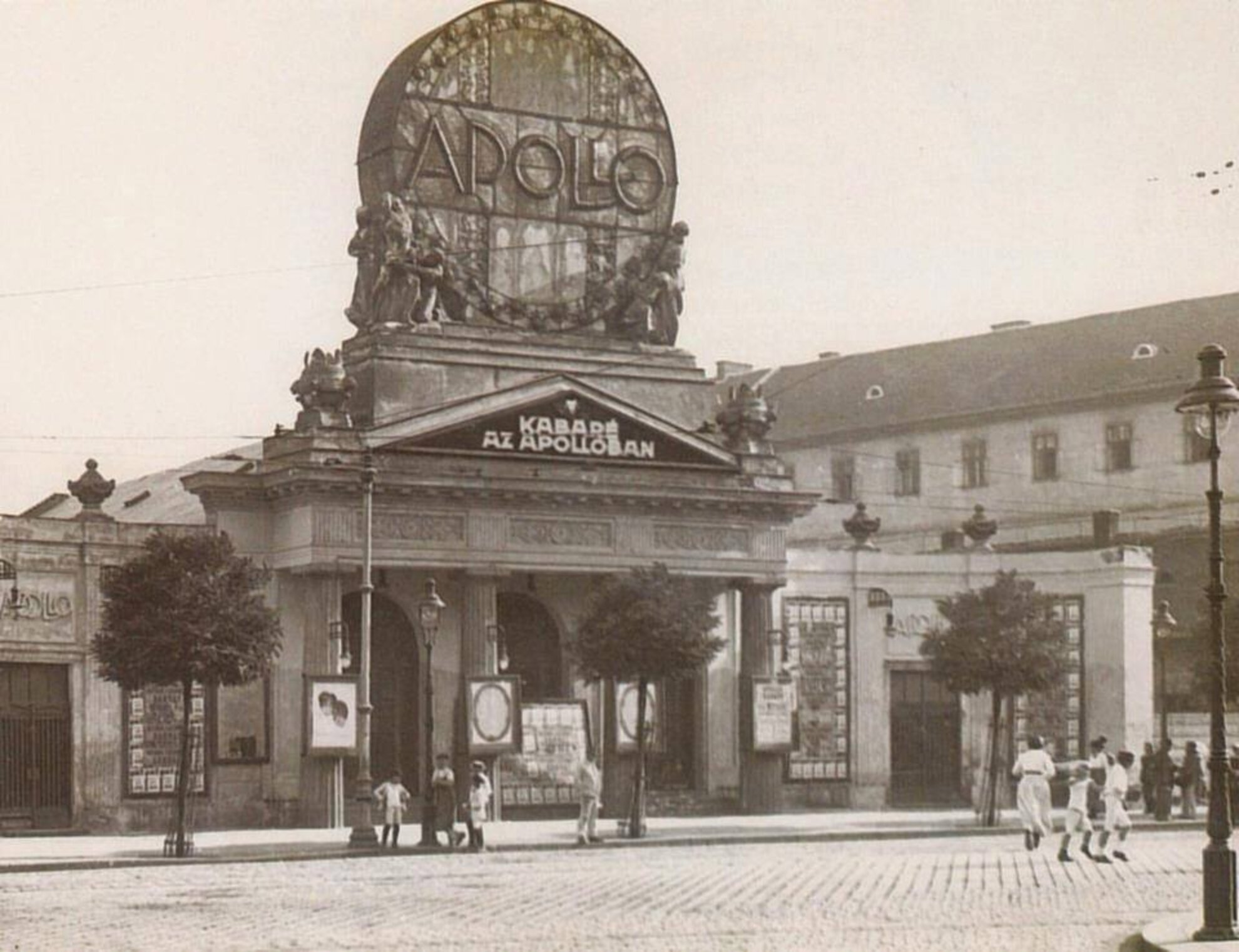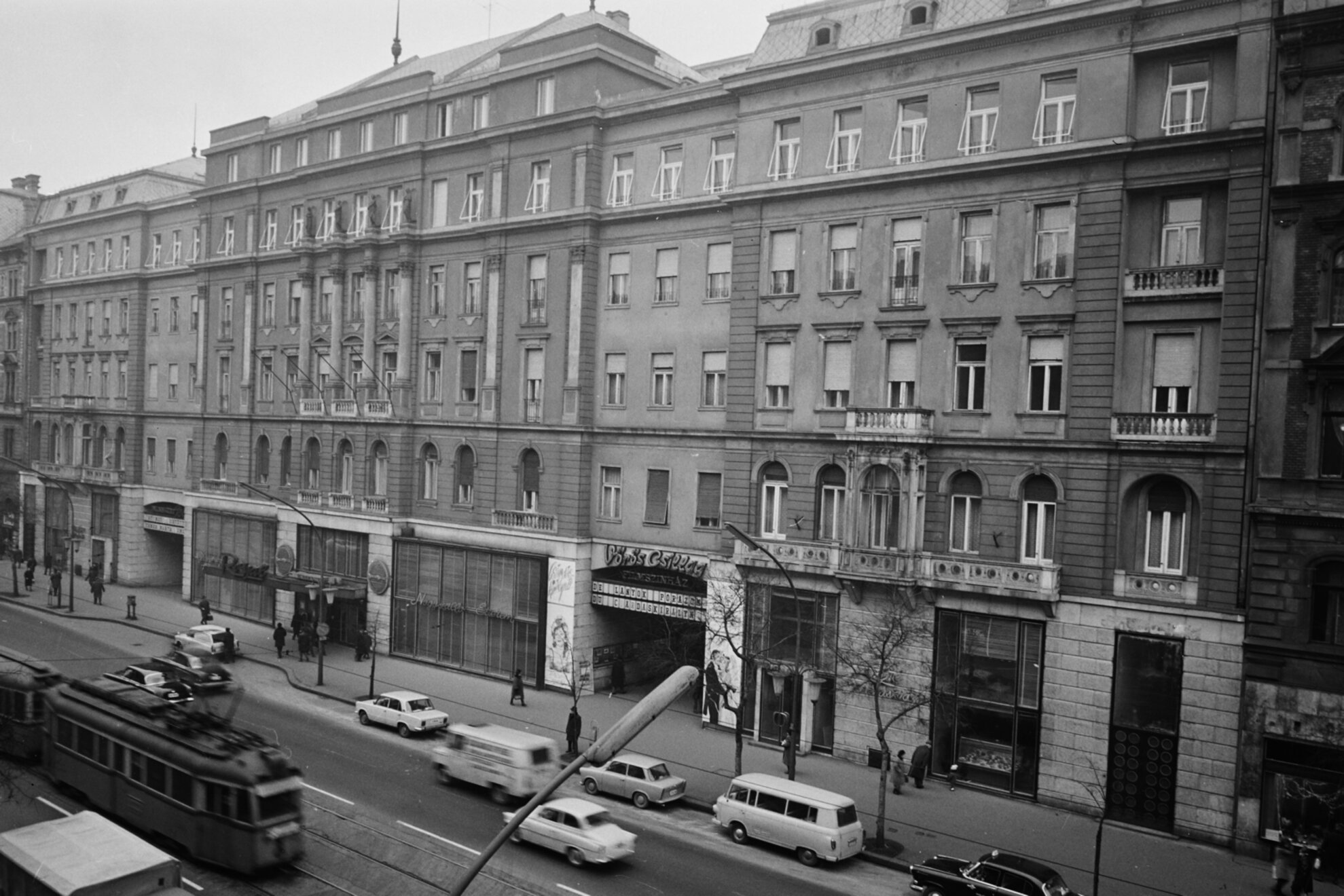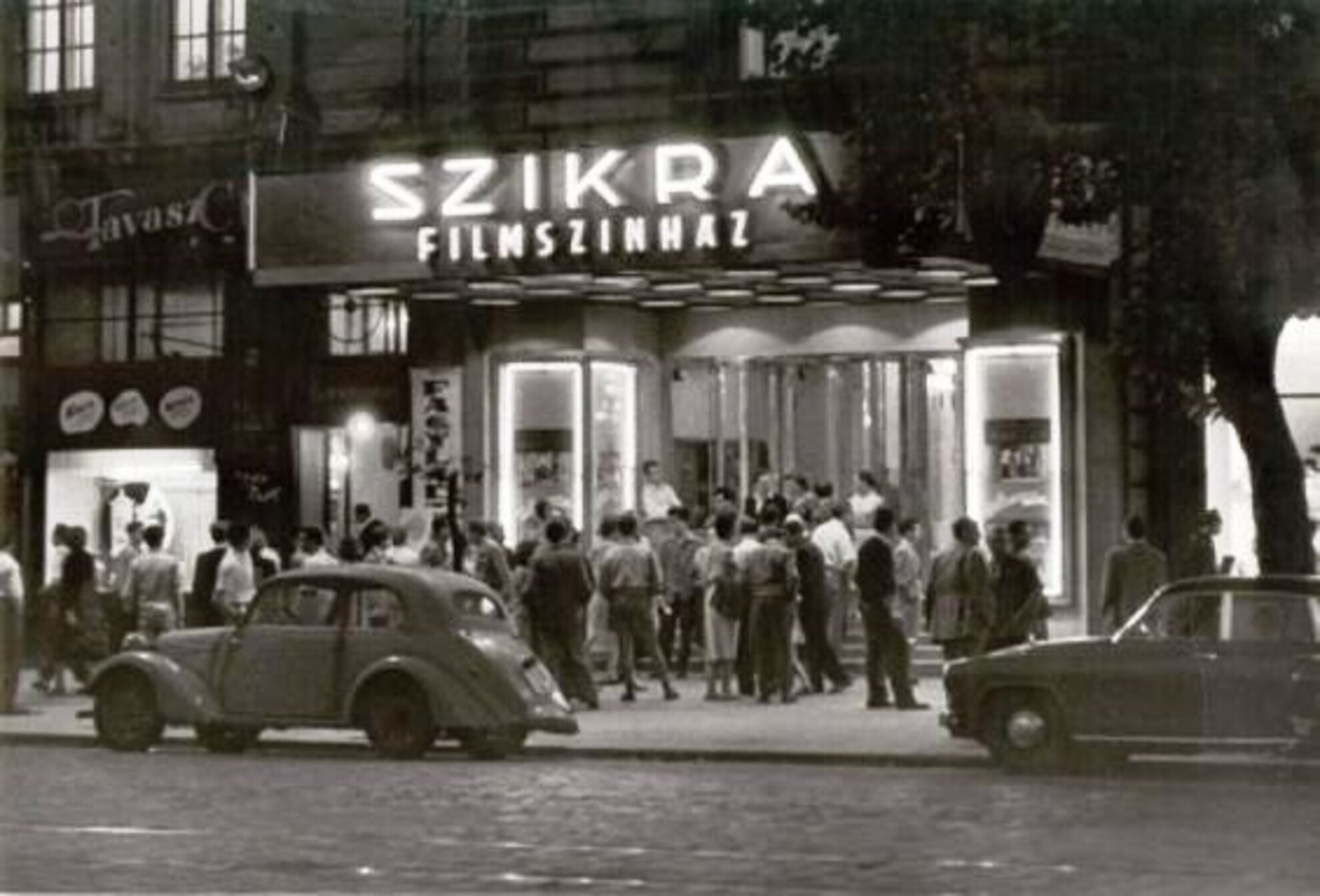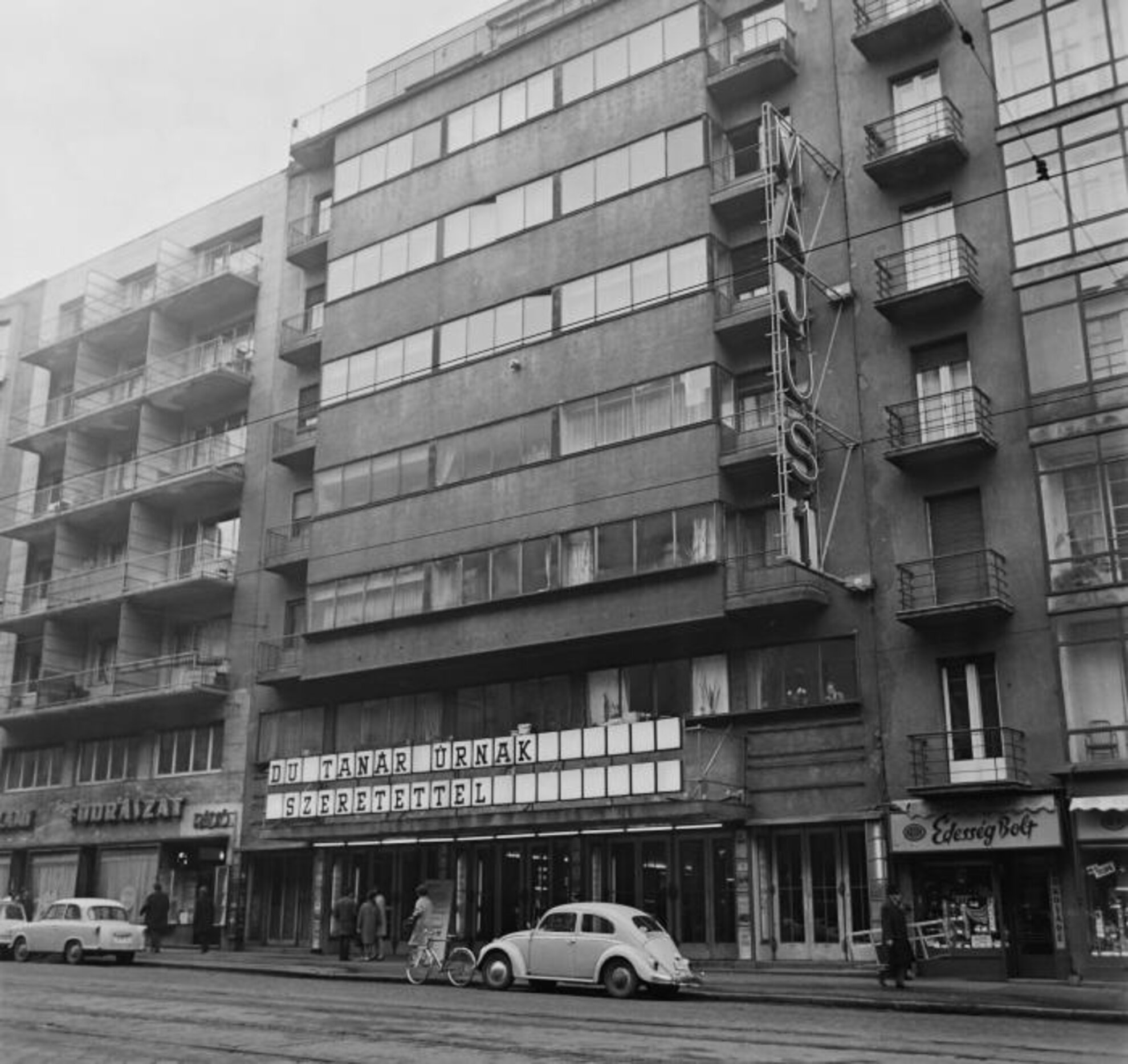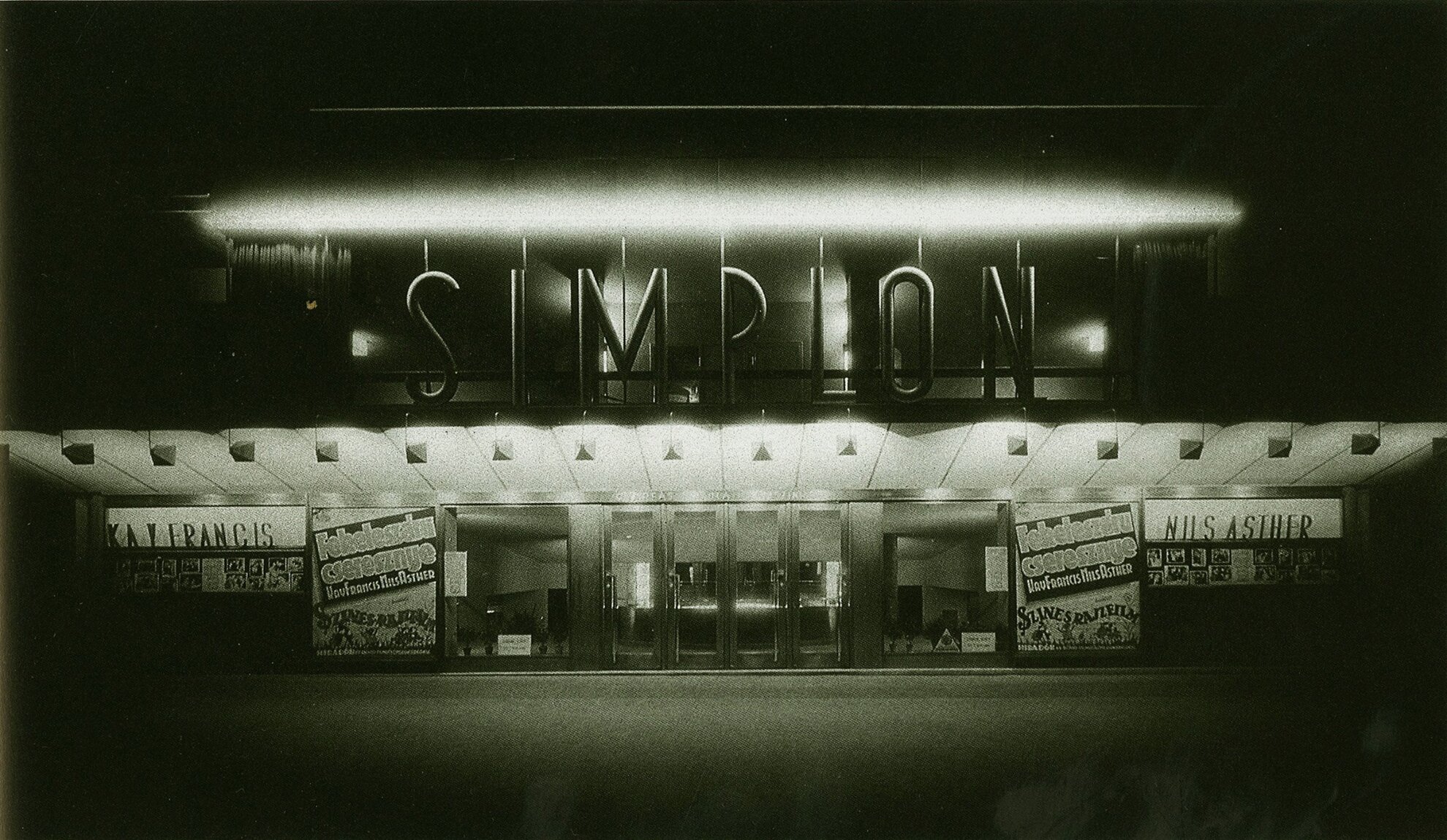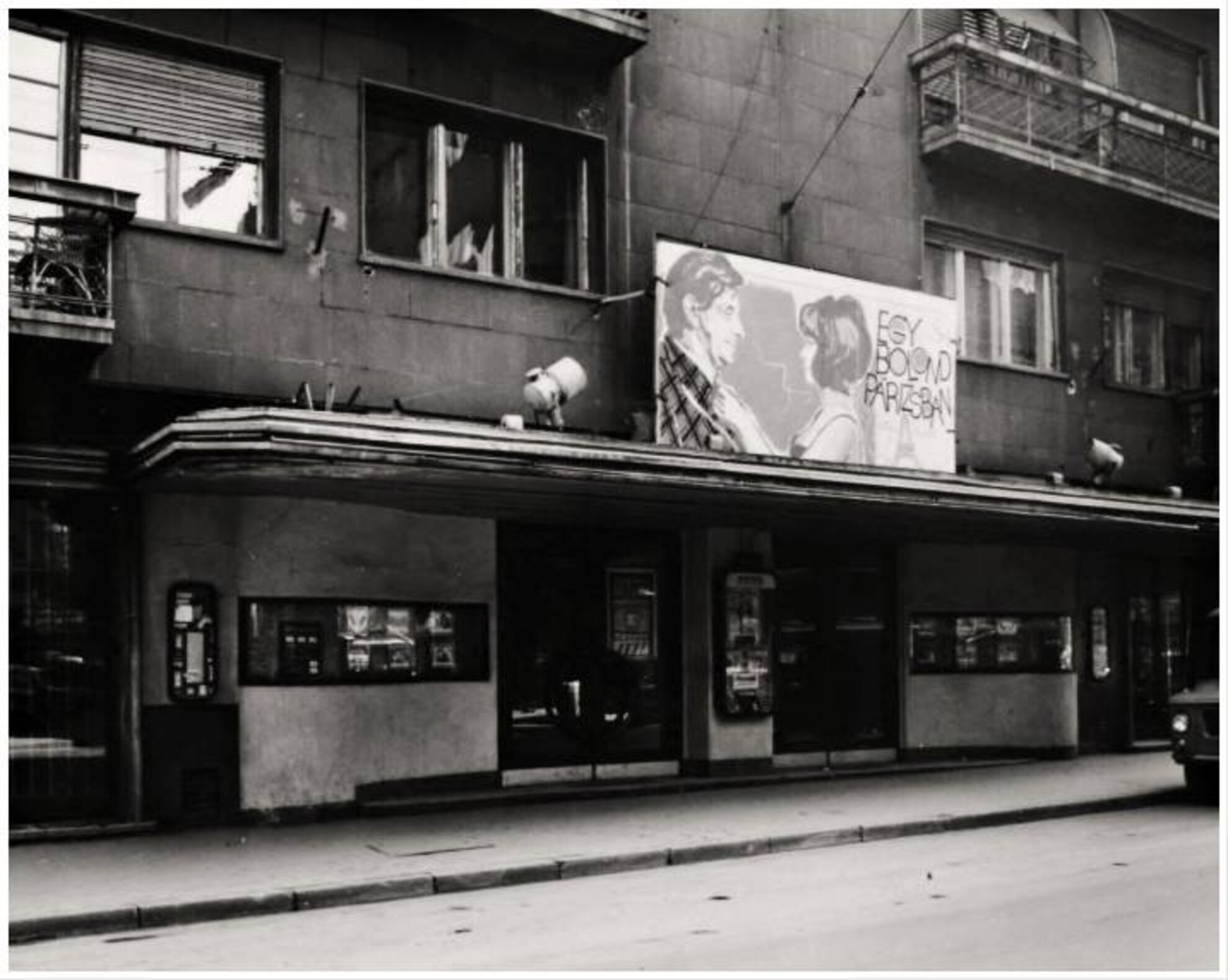1/6
Apolló
Apolló was the first cinema in Budapest that stood in its own separate building, created with the intention to screen movies. Opened on Blaha Lujza tér in 1908, this film palace was the most imposing cinema of its time. In 1915, it moved to the Royal Hotel (today’s Corinthia, on the Grand Boulevard), and was renamed Royal Apolló. At the original building, cinema staff would wear a uniform with white gloves. The original building staged cabarets in its final years, and closed in 1923 when it was torn down to make room for the Corvin department store, opened to the public in 1926.
2/6
Vörös Csillag
As the successor of the Apolló Royal, this hotel cinema was considered the be one of the most elegant cinemas in Budapest until the 1970s. The Royal was also prestigious, the first hotel to host screenings in the city when it opened in 1896. The Lumière brothers came here in person to show the first moving pictures. When the Apolló was housed here during World War I, it would show newsreels from the front, ladies in the audience looking out for their brothers and husbands on the screen. The building was damaged in the war, but was later reopened with its original staff. In 1949, the cinema received a new name: Vörös Csillag (‘Red Star’). The building caught fire during the Hungarian Uprising of 1956 but was renovated by 1961. Budapest’s first video cinema took place here as well, in 1983. Although regained its original name, Apolló, in 1993, then closed for good four years later. After it was converted into a luxury hotel, the Corinthia celebrated its glorious past with occasional screenings, such as the Christmas series of 2018.
3/6
Metro
Opened in 1926, this cinema was regarded as the pinnacle of contemporary elegance and style. Its technological properties were one of a kind in Hungary – the curtains moved mechanically, there was a built-in organ as well as a retractable roof. Able to accommodate 700 spectators, the Metro also operated with uniformed staff. After the war, the cinema’s popularity declined, but it regained its status in the 1960s with the name Szikra (‘Spark’). Long queues used to wait to be allowed in, beneath its emblematic neon lights. It was converted into a two-room cinema in 1978, before in 2000 it closed down completely, and a theatre opened in its place. Now a café operates here.
4/6
Átrium
The cinema was built together with a house for the Átrium construction company in 1935, occupying the first two floors and the courtyard of the building. Its stunning Bauhaus interior was designed with the ideal acoustic properties for a film theatre. The colour scheme of the cinema was dominated by blacks, reds and oranges – the main hall still reflects this original concept, but the characteristics of the auditorium were lost during renovation. After World War II, the cinema was taken over by the Hungarian Partisan Association, and then by the MAFIRT media company. In the beginning of 1947, it reopened with the name Május 1 Mozi (‘May 1 Cinema’), which was how it was known until 1990, when it became the Átrium again. It is now classified as a national monument, although it ended its cinematic career in 2001. After being closed for more than ten years, Átrium opened as film theatre once again in 2012.
5/6
Simplon
Running from Gellért Hill, lively Bartók Béla út and surroundings used to look a lot different at the last turn of the century – the neighbourhood only started developing after the construction of Liberty Bridge (then Ferenc József Bridge). The location of the Simplon was already occupied by a film theatre, built by Gyula Gyárfás. With a capacity of 300, the cinema only screened the silent films of the era, but a podium also functioned here with music and dance revues frequented by aristocracy. With the end of the silent film era, numerous less advanced cinemas were forced to shut down. Seeing this, Gyárfás began a large-scale construction in 1934. He built a six-storey, imposing and modern palace with a French courtyard to replace the old cinema. The architects were told to place the Simplon on the ground floor of the new building. The cinema, with a capacity of 630, was equipped with various groundbreaking solutions – the screenings itself took place three metres below ground, the seats slanted downwards until the sixth row, and faced the screen in a curve. Directed by Gyárfás until his death and then taken over by his widow, the cinema had a few name changes and suffered physical damage as well over time, but stayed in business right up to Hungary’s régime change in 1989. The arrival of multiplexes was a blow it could not handle though, and it closed its doors forever. Today, a café and a garage can be found in its place.
6/6
Lloyd
The Lloyd Cinema on Hollán Ernő utca was opened in 1937. Its building was constructed by renowned architects of the time, Béla Hofstätter and Ferenc Domány. Then, only one other cinema could be found on this section of the Grand Boulevard, the ELITE, today’s Kino Café. The fast urbanising, intellectual population of Újlipótváros was in urgent need of other film theatres, and Lloyd was built to accommodate 500 visitors in its screening room. The cinema had heating and air-conditioning but its main curiosity was the unique adjustable roof, that could be pulled back in fine weather. Lloyd quickly became a popular attraction. Due to Hungary’s position during World War II, the name of the cinema was changed to Duna, to remove Anglo-Saxon influences. After the war, the political parties divided the local cinemas among them, and Lloyd – changing its name back to Lloyd and then to Duna again – was given to the Social Democrats. Its renovation over the years took away much of its former charm, but its capacity rose from 500 to 100. In 1993, the cinema was complemented with a video-rental, stocking close to 6,000 movies. The appearance of multiplexes was too much to handle for the Lloyd as well, closing down in 2012. The Budapest Jazz Club functions in its place today.

